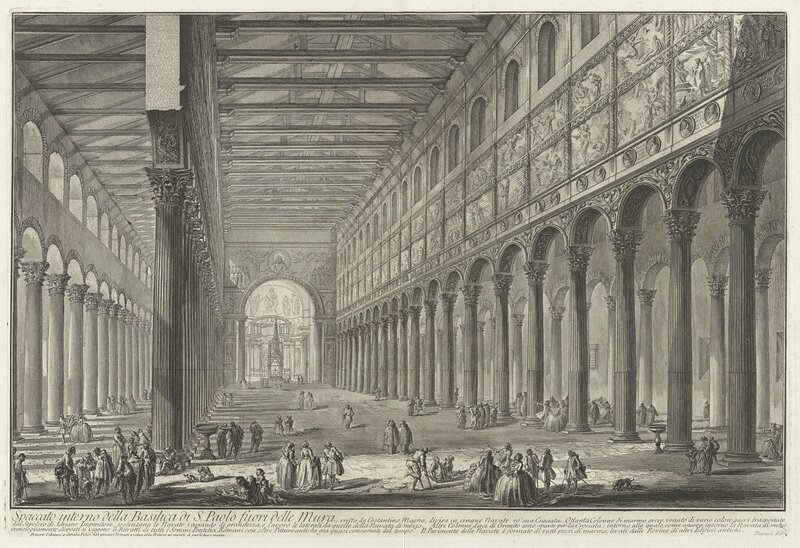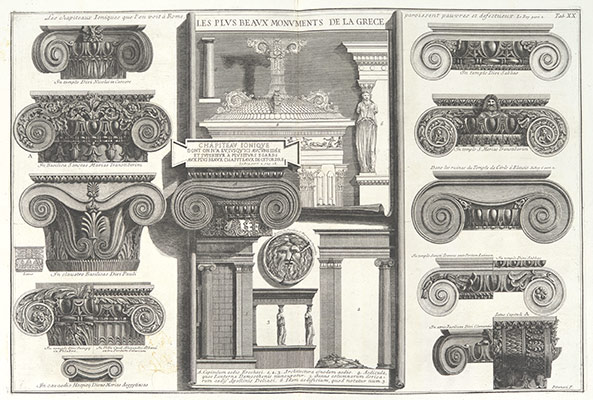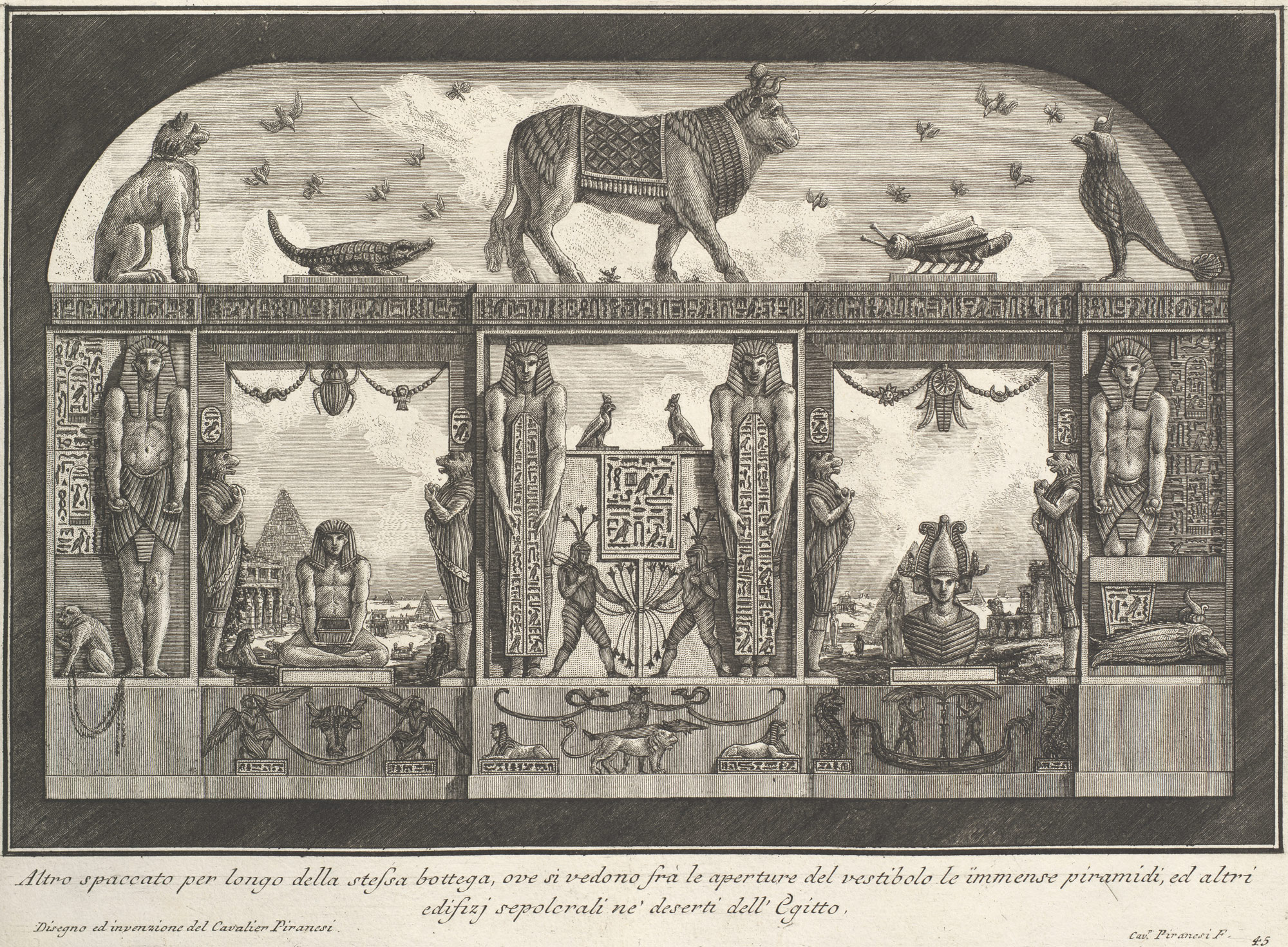What can I say about these prints! I'm actually feeling rather jealous of the talent of this man. The words to describe the works are many. the details and fine lines and the perspective are something else. To think that all of these happened in the 18th century does indeed confirm to my own mind that I was born in the wrong time. I've felt this way many a time and its usual when I have a powerful admiration of a work or subject.
Interior view of the Pantheon

This is one print I can identify with as I myself have stood at this very entrance.. Unable to enter because of a service taking place I was also left peering inside. However This etching gives some much more detail than any photo could of gave. The scale of the interior does seem to me to be exaggerated against the men in the foreground. I'm not sure if this was true or not but if does emphasise the large scale of the building and give a real sense of the place. The way the artist has given us different viewing direction in and around the building, from the darken foreground. to the light coming in through the roof. I feel a shadow hasnt been missed and every detail does indeed seem to of been thought of.
Upon reading a little of Piranesi (which I dont normally do) I learned that he was brought up into a family of stone masons and architects. Learning from a young age, he later went on to work under Giuseppe Vasi who was also a great and established engraver, cartographer and writer. Vasi introduced Piranesi to the art of etching and engraving of the city and its monuments. However, Vasi soon found Piranesi's talent was beyond engraving and said that he was to much of a painter than an engraver.
| Interior of The Basilica of S. Maria |

From what I take of this artist is that knowing your medium and strengths is what is important.
Did he have a natural ability to drawing and see? Was it something he learnt to perfect from a young age till his last days? To think I can hardly draw a bloody cube right tells me I'm not doing enough.
The prisons were another example of his work with a series of 16 prints produced in first and second states that show enormous subterranean vaults with stairs and mighty machines. A Surrealist style they do seem eerie and of eccentric appearance.



I think for someone with a natural ability to draw with ease, these images would of gave a great freedom to the artist. I do like how they do look like pencil drawing here. Getting a great sense of scale and light again. The forms aren't really that detailed and I guess that our mind is happy to make up the image in a finished example by piecing together the whole of the imagery. If that makes sense?
I do like the energy and feeling of a lot happening in the etchings. From the stillness of the roman architectural etchings these seem different. Like an actual 'ART' image rather than a source of reference.
Piranesi did work on other subjects as well as in the city of Rome... His interests also lay with designs in the Etruscan, Greek, Roman, and even Rococo styles,
 |
| Various Roman Ionic capitals compared with Greek examples from Le Roy |




Great report!
ReplyDelete